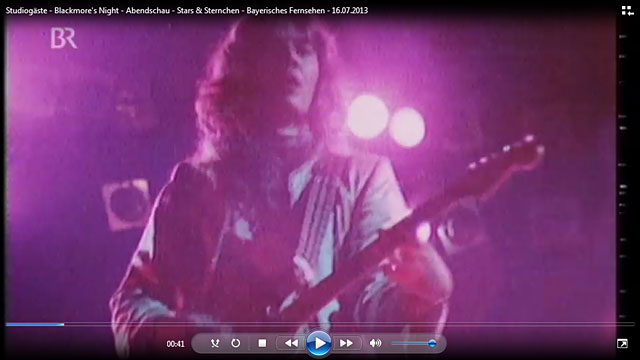Prima, daß Produkte ständig verbessert werden …

… aber von Abbildungen in Form und Farbe abweichende Abbildungen sind verwirrend!

Prima, daß Produkte ständig verbessert werden …

… aber von Abbildungen in Form und Farbe abweichende Abbildungen sind verwirrend!
Neuere ActivePerl-Varianten nerven beim Start eines Skripts mit der Meldung “Set up gcc environment”, für deren Deaktivierung es auf den ersten Blick keinen offensichtlichen Schalter gibt.
Die Lösung bringt ein Blick in die Doku des Moduls “ActivePerl::Config”
perldoc ActivePerl::Config
welche die Umgebungsvariable “ACTIVEPERL_CONFIG_SILENT” ausspuckt, die genau diesen Zweck erfüllt:
ACTIVEPERL_CONFIG_SILENT
If set to a TRUE value (e.g. “1”), suppress warnings on STDERR when new compilation environments are set up. This happens when a supported compiler is detected that is different from the one that perl was originally built with.
Am 16. Juli waren BLACKMORE’S NIGHT in der Abendschau des Bayerischen Fernsehens zu Gast, einsortiert in der Rubrik “Stars & Sternchen”.

Neben der obligatorischen Anmoderation sowie zwei Live@Studio-Nummern wurde auch eine kurze Einführung über Ritchie Blackmore gezeigt und die darin enthaltenen Live-Ausschnitte mit folgendem Text untertitelt:
Er ist eine Legende: Gitarrist und Songwriter Ritchie Blackmore. Als Urmitglied der Band DEEP PURPLE machte er Rock-Geschichte. Nach seinem Ausstieg war er mit der Rock-Formation RAINBOW erfolgreich, dann hängte er die E-Gitarre an den Nagel.
Wer den Fehler nicht gleich findet: der DEEP PURPLE-Gitarrist auf dem Screenshot is Tommy Bolin, nicht Ritchie Blackmore …
 “Copenhagen 1972” is the second release of the earMUSIC “The official Deep Purple (overseas) live series”.
“Copenhagen 1972” is the second release of the earMUSIC “The official Deep Purple (overseas) live series”.
While “Paris 1975″ features Deep Purple MKIII in their final days, “Copenhangen 1972” captures the legendard Deep Purple MKII at the peak of their career. Same as the Paris show, Copenhangen isn’t a new release.
The recording is basically the soundtrack to the “Live in Concert 1972/73″ video (better known as “Scandinavian Nights (Live in Denmark 1972)” in Europe) and reintroduces three MKII bonus tracks of the video which were left out on the Sonic Zoom CD release. In addition to these tracks (recorded on May 29, 1973 in New York at Hofstra University, Hempstead, Long Island) a track called “1971 Australian Interview” has been included as additional bonus.
The main show, recorded at the KB Hallen in Copenhagen, Denmark dates to March 01, 1972 and shows Deep Purple right before the release of the “Machine Head” studio album, Ian Gillan introducing the opening number “Highway Star” as “What we got is a new song. It’s one of the next album we got coming up. …”. While a couple of Machine Head songs made the first of their now everlasting appearances, the show also included a rare live version of “Fireball” which had been replaced in the setlist by “Smoke On The Water” about a week later.
Originally recorded as a TV feature, the recording – although remastered – still shows some weaknesses soundwise, especially when compared to more prominent recordings like “Made In Japan”: during the first tracks, guitar and organ are low in the mix while while drums and vocals dominate the scene, but this gets better during the following numbers. Contrary to the sound the band performance shows no compromises.
The bonus tracks, sound better than the Copenhagen show but sadly offer just a small part of Deep Purple 1973. The interview is ok for a one time listen, offering standard topics like the audiences being “really fantastic”.
The discs are packaged into a slim digipak with one disc sitting right above the other which means disc juggling and some unavoidable scratches are going to happen every now and then.
Gerade beim Bearbeiten des Designs mal wieder über die Frage gestolpert und deshalb einen Blick in den Duden geworfen:
Der Plural »Wörter« wird meist für Einzelwort oder vereinzelte Wörter ohne Rücksicht auf den Zusammenhang gebraucht.
Der Plural »Worte« wird meist für Äußerung, Ausspruch, Beteuerung, Erklärung, Begriff, Zusammenhängendes oder bedeutsame einzelne Wörter gebraucht.